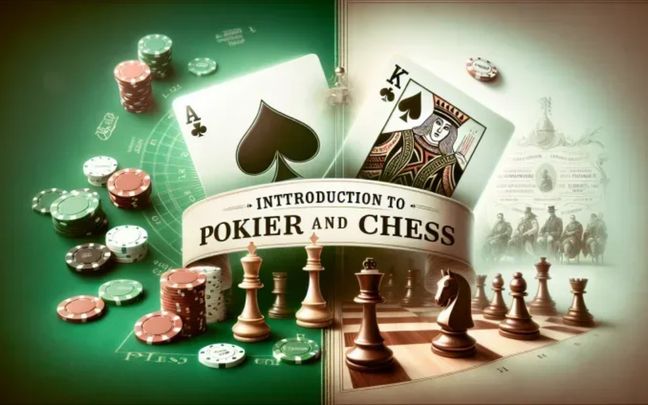The blind structure is a crucial factor that shapes gameplay and strategy in poker, directly influencing the pace and competitiveness of each hand. This article will provide a detailed explanation of how blinds work and their role in poker, helping you enhance your skills and overall understanding of the game.

What Is the Blind Structure in Poker?
The blind structure in poker is a fundamental component of the game, especially in popular variants like Texas Hold'em and Omaha. Blinds are mandatory bets placed by the two players seated immediately to the left of the dealer (the one distributing the cards) before a hand begins.
This mechanism is designed to ensure continuous action during the game, motivating players to participate and preventing a passive strategy of waiting only for premium hands.
Details of the Blind Structure:
-
Small Blind (SB): The player seated directly to the left of the dealer places the "small blind." The small blind is typically half the size of the "big blind," though it can vary depending on the table rules. For example, if the big blind is 100 chips, the small blind is usually 50 chips.
-
Big Blind (BB): The player seated immediately to the left of the small blind places the "big blind." This is the minimum bet that other players must match if they wish to stay in the hand. The big blind is mandatory and larger than the small blind.
-
Dealer Button: While the dealer does not place a blind, the dealer button (or simply "button") plays a crucial role as it determines who posts the small blind and big blind for each hand. After every round, the dealer button moves clockwise, ensuring all players rotate through different positions at the table.

Why Are Blinds Necessary in Poker?
In poker, the blind structure is a critical element that helps create balance in the game and ensures that everyone who participates in the hand must bet fairly, while also providing an incentive to join. Below are some reasons why the blind structure is so important in poker.
Blinds Create an Incentive to Participate
One of the main reasons the blind structure is used is to create an incentive for players to join each hand.
In poker, without blind bets, you could easily skip every hand without putting in any money just because you don't like your cards. This would make the game slow and unexciting.
The blind structure ensures that every player has to contribute to the pot from the beginning, creating an initial pool of chips. This forces players to make active decisions from the first hand, instead of just waiting for good cards. Blinds help drive action, create competition, and make the game more enjoyable.
Ensuring Fairness in Distributing Advantage
The blind structure helps minimize the advantage you might have when being dealt cards first, especially in long sessions.
When you have to post the small blind and big blind, you not only get the right to play, but you are also forced into making decisions earlier than other players. This increases the strategic nature of the game as you must calculate carefully before making decisions based on your cards, the situation, and especially your position at the table.
For example, players in the small blind and big blind positions will face some tough situations, like having weak hole cards but still needing to continue betting or folding. This fairness helps all players have an equal opportunity to participate in the hand, regardless of their position at the table.
Helps Change Strategies Over Time
The blind structure not only helps create an incentive to participate but also influences how players make decisions throughout the hand.
The increasing blind levels over time force players to adapt and adjust their strategies to deal with the situation and the higher blinds as the hand progresses.
For example, in a poker tournament, blind levels increase after each round, putting pressure on players to make quicker and more effective decisions, avoiding being "blinded out" by a dwindling chip stack.
The change in blind levels creates a challenge in chip management and affects how players interact and make decisions during betting rounds. Players with good strategies will know when to raise, when to fold, and when to take risks.
The blind structure helps the game maintain a fast pace, keeps things changing, and prevents the game from ever becoming boring.
Creating Tension and Strategy
Once you've posted your blind (small blind or big blind), you must decide whether to continue playing the hand or not. This creates many tense situations, especially when you have weak hole cards. You might have to decide whether to call, raise, or fold. Without the blinds, there would be no incentive for you to make such decisions.
The blind structure also creates a clear division between different betting levels and phases in the hand. You have to adjust your strategy as the blind levels increase, and each decision will have a powerful impact on your chance of winning or losing the hand.
Ensuring Speed and Momentum in the Game
Without blinds, poker games would slow down considerably. Players wouldn’t have to contribute to the initial pot and could wait for a long time to receive strong cards. This could result in each hand taking longer and having long periods of waiting. The blind structure helps maintain a consistent pace in the game, ensuring that every hand has participation from all players and preventing long delays.
As blind levels change over the course of the hand, you need to figure out how to play your chips wisely and avoid being eliminated too early. The increasing blinds help keep the game moving quickly while also making strategic decisions more important.
Encouraging Chip Movement Between Players
One of the exciting aspects of poker is the movement of chips between players. The blind structure helps drive this by creating situations where you must participate and could win or lose a large amount of chips in a single round.
Without blinds, you wouldn’t be required to bet to enter the hand, which could lead to stagnation in the movement of chips between players, diminishing the excitement of the game.

With the change in blind levels over time, you must continuously adjust your strategy and deal with changing situations, thereby adding excitement and challenges to each hand.
The blind structure in poker is not only a part of the game's rules but also a crucial element that helps maintain the appeal, fairness, and strategy of the game. It creates an incentive for all players to participate, drives competition, and ensures that the game always progresses quickly and remains engaging.





























